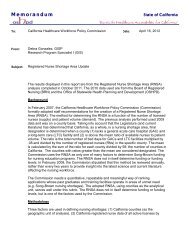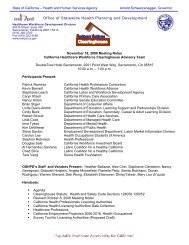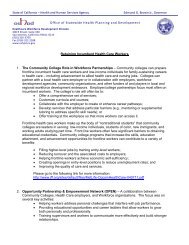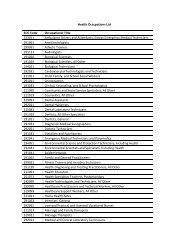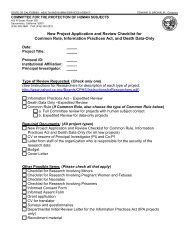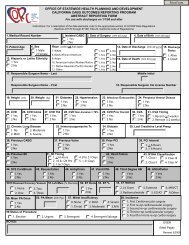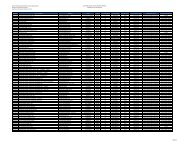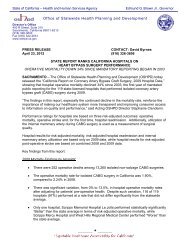Best Practices for Project Management, Design, and Construction of ...
Best Practices for Project Management, Design, and Construction of ...
Best Practices for Project Management, Design, and Construction of ...
Create successful ePaper yourself
Turn your PDF publications into a flip-book with our unique Google optimized e-Paper software.
Local Fire <strong>and</strong> Water Authority Requirements<br />
The installation, location, <strong>and</strong> configuration <strong>of</strong> the cross-connection control device (detector<br />
check) must be in accordance with the requirements <strong>of</strong> NFPA St<strong>and</strong>ard No. 13, Sections<br />
8.17.4.6.1 <strong>and</strong> 8.17.4.6.2 <strong>and</strong> the requirements <strong>of</strong> the jurisdiction responsible <strong>for</strong> en<strong>for</strong>cement <strong>of</strong><br />
Title 17, Sections 7583 through 7605 <strong>of</strong> the CCR.<br />
Local Fire Authority Approval<br />
The fire flow, hydrant spacing, FDC, <strong>and</strong> location <strong>and</strong> type <strong>of</strong> control valves must be in<br />
accordance with the requirements <strong>of</strong> the statutory fire authority.<br />
OSHPD reviews fire sprinkler installations <strong>for</strong> compliance with NFPA St<strong>and</strong>ards in accordance<br />
with CBC Section 903.3.1. In addition to the specific requirements <strong>of</strong> the NFPA St<strong>and</strong>ards, the<br />
location, configuration, <strong>and</strong> arrangement <strong>of</strong> fire mains, hydrants, FDCs, <strong>and</strong> control valves<br />
depend on site-specific conditions <strong>and</strong> the requirements <strong>of</strong> the local fire authority. To facilitate the<br />
review <strong>and</strong> approval process, the following per<strong>for</strong>mance st<strong>and</strong>ards should be considered when<br />
designing <strong>and</strong> preparing a fire sprinkler system <strong>for</strong> submittal:<br />
• The FDC should be visible, accessible, <strong>and</strong> installed on the address side <strong>of</strong> the building.<br />
• The FDC should be located at the public street as close to the curb face as possible. The<br />
distance from the FDC to the curb face should not exceed 25 feet.<br />
• The FDC should be located within 150 feet <strong>of</strong> a public fire hydrant.<br />
• The FDC should be located a minimum <strong>of</strong> 25 feet from the building. When this distance<br />
cannot be provided, a minimum two-hour fire-resistive wall should be provided.<br />
• Each fire sprinkler system should have a main post indicator valve located at the public<br />
water valve connection.<br />
• Each fire sprinkler riser should have an exterior control valve located above grade.<br />
• The local water purveyor should be contacted <strong>for</strong> requirements pertaining to the<br />
installation <strong>of</strong> cross-connection backflow control devices (detector checks).<br />
• The local fire jurisdiction should be contacted <strong>for</strong> requirements pertaining to fire flow<br />
<strong>and</strong> hydrant spacing. Requirements pertaining to fire flow, hydrant spacing, types <strong>of</strong><br />
control valves, <strong>and</strong> the location <strong>of</strong> valves <strong>and</strong> connections vary from jurisdiction to<br />
jurisdiction <strong>and</strong> from facility to facility within each jurisdiction.<br />
Adherence with the per<strong>for</strong>mance st<strong>and</strong>ards enumerated here does not necessarily assure<br />
compliance<br />
with local requirements. Documentation <strong>of</strong> local fire authority approval must be submitted to<br />
OSHPD prior to OSHPD approval.<br />
(OSHPD <strong>Best</strong> <strong>Practices</strong>) Page 30 DRAFT FINAL, Sept. 2011



